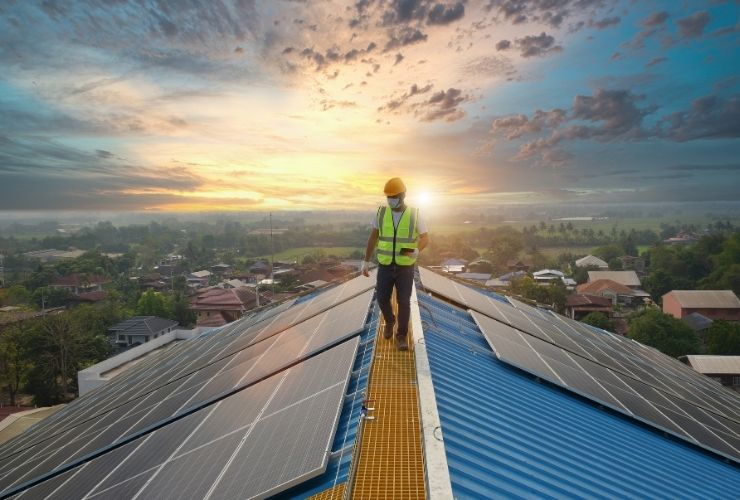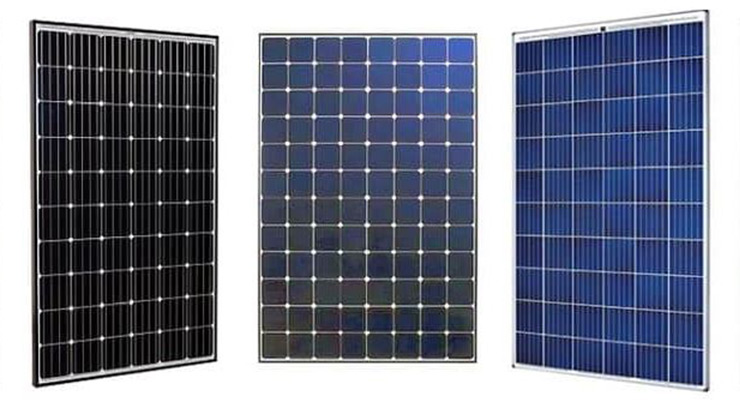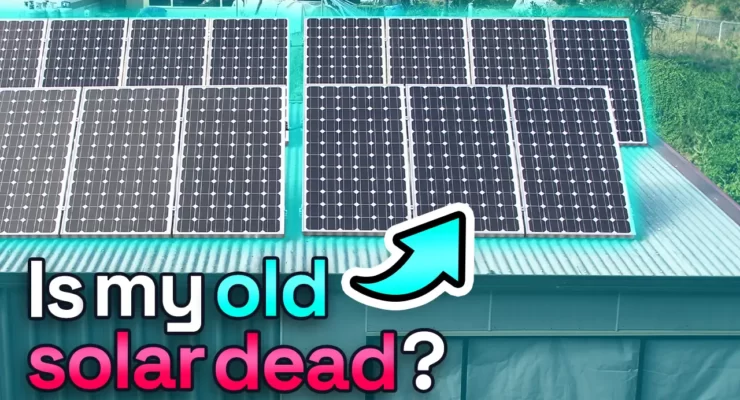Fast read
Deciding between keeping or replacing an existing solar system depends on factors like is the system still receiving the "Premium Feed-in-Tariffs" in your State.
If you benefit from these and if your system is larger than 1.5 kW, sticking with your current system might make sense. However, over time, panels and inverters degrade, impacting performance.
Upgrading to newer, more efficient technology can be cost-effective, as modern solar panels and solar inverters are significantly better and allow a larger system to supply your home effectively.
Removing the existing solar system can free up roof space for a more efficient solar panel installation. You can also claim rebates for the new system and save on the costs of solar panels. Recycling old equipment can not be undertaken. In most cases, scrapping the old system and starting fresh is the recommended course of action.
I have an old solar system. Do I eliminate it, or do I upgrade my existing solar system?
Let’s say you want to upgrade an existing solar system. You purchased a small system many years ago, in the early 2000s, because around that time a solar panel cost over $1,000, when today panels with double and even close to triple capacity only cost a few hundred dollars. The system served you well and you made money by saving on decades of power bills.
Lately, with the ongoing increase in electricity bills, your bill has also become quite high, simply because your existing 2kW solar PV system does not offset too much of your consumption nowadays. So you have experienced the benefits of solar and you know it works well, but you need more.
Technically one can not add a new inverter to the existing solar system and just add more panels for a number of reasons. Firstly, the panels have changed significantly and are not compatible. Secondly, the technical standards have changed and while your existing solar system is still allowed to run, nothing can be added, and even repairs have to be undertaken in a like-for-like replacement regime.
So there are two clear options:
- Replace your existing solar system and start from scratch with most likely a much larger system ;
- Leave your existing solar system as is and add a brand-new solar system to the mix.
Option 1: Replacing your existing solar system completely
So let’s say you’ve had your system for ten years. It has performed well to date but is not meeting your needs now. Your family may have grown, use more power, you’re using more electrical appliances, buy an electric car and want to charge it.
But you’re looking at your existing solar system and thinking it’s still performing okay. You were also sold on it having a 20+ year lifespan. It seems a waste to replace and scrap an existing solar system. A waste of resources and an investment that you made in this solar panel system ten years ago.
Advantages
Modern technology has improved solar a lot
Modern solar panels and inverters are more efficient and have higher energy output compared to those from a decade ago. Replacing your existing solar system can significantly increase the energy yield and potentially cover a larger portion of your electricity needs.
Two different PV systems side by side can look ugly
Sometimes the initial solar installer plonked the solar array right in the middle of the roof, in the easiest-to-access spot. This now means you do now have to place the new panels around your existing solar system creating a patchwork look on your roof. For this reason, many installers recommend replacing the existing solar system and starting from scratch rather than upgrading the existing solar system, as the final look of your home should be a consideration.
Changes in technology
New systems come with updated technology, such as improved inverters and monitoring systems, which can provide better performance and easier tracking of energy production and consumption. They also have sexy apps and allow more smooth integration with other energy appliances such as air-conditioning and heat pumps as well as batteries.
Panel and inverter technology has improved a lot over the last ten years. Standard panels ten years ago were 250 watts per panel and were around 14% efficient. Modern panels are up around 430 – 450 Watts and are over 22% efficient. So for the same space, you can produce around 50% more power with the latest panels compared to the 10-year-old ones you have.
Longer warranties and lifespan
Newer panels, inverters and racking typically have a longer lifespan and come with fresh warranties, providing peace of mind for the coming decades.
Improved aesthetics
Modern solar panels and setup could offer sleeker designs, and better aesthetics, with black panels and black rails, aligning with the current architectural trends.
How much have solar panels and inverters degraded in the existing solar system?
Let’s say your existing solar system is ten years old, and over that time, the production and performance are likely to have dropped. Solar panels degrade over time, depending on the quality of the solar panels on your roof. You may find that over the last ten years, the power you are exiting the panels has dropped a little (1% or a bit less per year). In some cases, you can even expect cheaper panels to have decreased by more than 10% overall.

Disadvantages
Higher initial cost
Replacing the entire system and adding a few more kW in capacity can add a little to the cost, but often it will be less than one might fear. Maybe get pricing for both options and you will be surprised how little extra a larger solar PV system will cost. However, the higher investment is likely to pay off over time through increased energy savings.
Solar waste
There’s the environmental consideration of disposing of or recycling the old solar panels and inverters, which may not always be straightforward.
Option 2: Leave your existing solar energy system as is and add a brand new second system to the mix
Advantages
Increased capacity for a lower cost
By adding a new solar system, you are essentially increasing the capacity to generate more solar power without losing the value of your initial investment.
Cost-effective
It might be more cost-effective upfront as you’re not removing the existing system, but rather supplementing it.
Environmental consideration
Retaining the existing solar system which might be working perfectly fine is an environmentally friendly option as it continues to produce energy, albeit at a lower efficiency, as panels would have degraded somewhat.

Disadvantages
More technically complex setup
Having two systems might complicate the setup, requiring additional space and possibly more maintenance. Also in case you seek to install a DC battery, the solar from the existing system will not be available to charge the battery.
Varying technologies
The differing technologies between old and new systems could create monitoring and maintenance inconsistencies and will not allow for the most smooth operation.
Limited upgrades
The existing solar system will still have its limitations, and over time, might become increasingly outdated, eventually necessitating a replacement. There is no guarantee how long the existing solar system will last, and when it finally breaks down, one has to redesign the setup again.
Are you on one of the old Premium Feed-in Tariffs?
Several States across the country still have “Premium Feed-in-Tariffs” in place for solar systems installed ten years ago or so. If you are on one of these in the Northern Territory, Queensland, South Australia or Victoria.
Rebates
You can also claim the “rebate” or small-scale technology certificates for the entire new system. Even when replacing a system that would have received the rebates ten years ago. Many quality solar installers also use recycling facilities for panels that are removed. So you can also request that the equipment is recycled to avoid wastage of the panels in a landfill.
So do I scrap my existing solar system?
In most cases, it would make sense to not upgrade the existing solar system and start the next solar system design from scratch. This is because has solar technology significantly increased efficiency and decreased in price. But specific parts of your system will be coming to the end of their life after ten years and for most cases.



